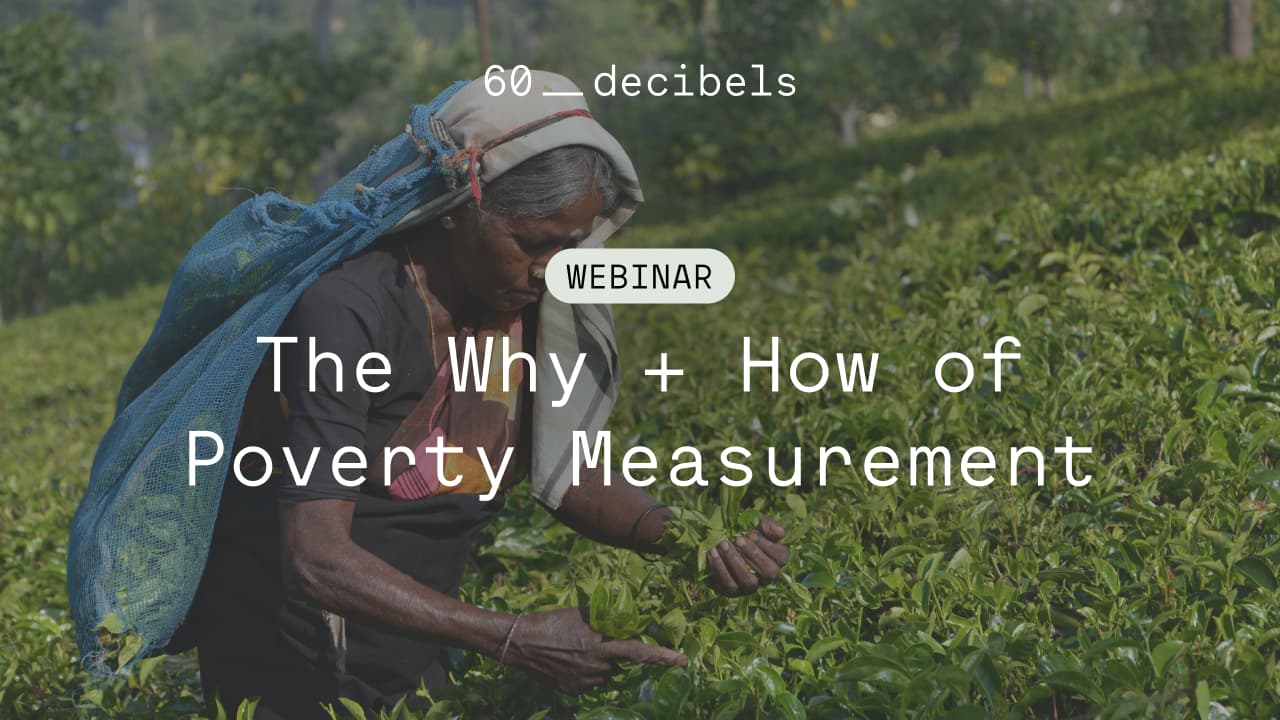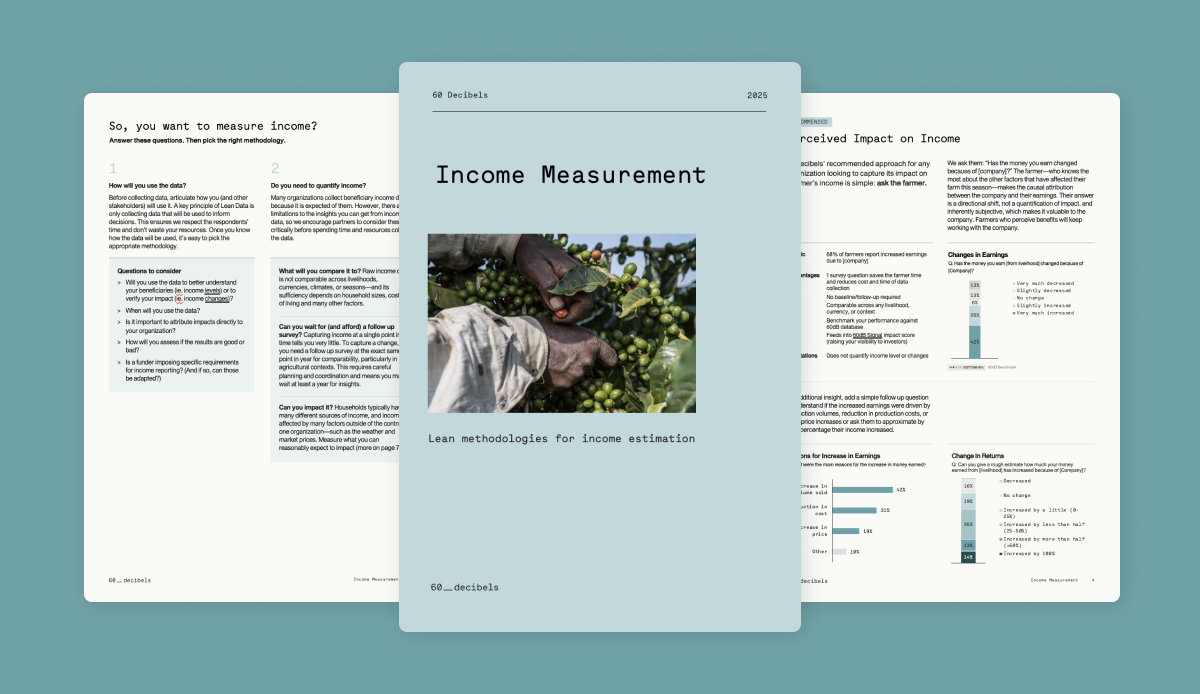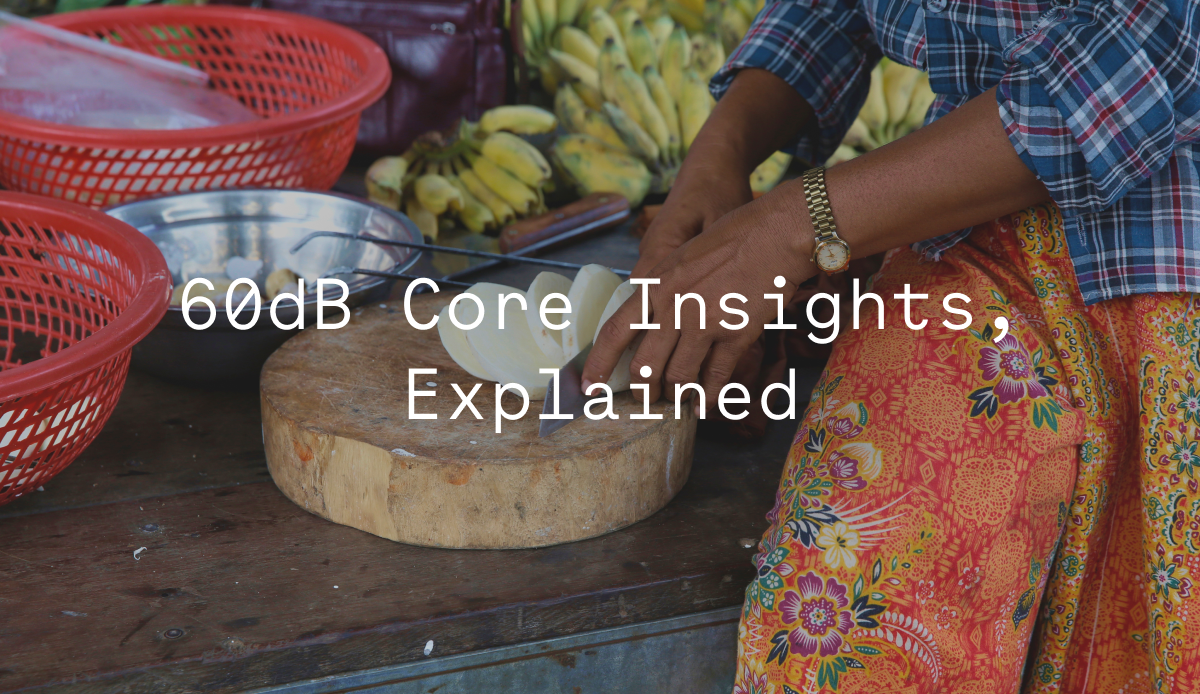

Lean Income Measurement
In the pursuit of poverty alleviation, many organizations seek to measure the income of their beneficiaries. While this data can be valuable, capturing it accurately is complex, resource-intensive, and time-consuming for both your team and respondents. Given these challenges, it’s essential to ensure that the data you collect is truly useful.
At 60 Decibels, we offer multiple methodologies for measuring income, summarized in a brief you can download here. Before launching into data collection, we recommend answering some critical questions to ensure you gather only the information needed to inform decisions—maximizing efficiency and minimizing the burden on respondents.
How will you use the data?
- Will the data help you understand your beneficiaries’ income levels, or are you trying to verify your impact on their income over time?
- When will the data be used?
- Is attributing impact to your organization a priority?
- How will you determine if results are positive or negative?
- What decisions will you make using the results?
- Are there funder-imposed requirements for reporting, and can those be adapted to be more practical?
Do you need to quantify income?
Maybe you do. But first, consider:
- What will you compare it to? Raw income data is not comparable across livelihoods, currencies, climates, or seasons—and its sufficiency depends on household sizes, costs of living and many other factors.
- Can you wait for (and afford) a follow up survey? Capturing income at a single point in time tells you very little. To capture a change, you need a follow up survey at the exact same point in year for comparability, particularly in agricultural contexts. This requires careful planning and coordination and means you must wait at least a year for insights.
- Can you impact it? Households typically have many different sources of income, and income is affected by many factors outside of the control of one organization—such as the weather and market prices. Measure what you can reasonably expect to impact.
Choosing the right methodology
Recommended approach: ask the farmer
The simplest and most effective way to assess impact on a farmer’s income is to ask them directly: “Has the money you earn changed because of [company]?” Farmers themselves are best positioned to assess whether their income changes are due to your intervention or external factors. This approach provides a subjective but valuable directional shift that helps organizations understand their impact without overcomplicating data collection.
Other income measurement methodologies
- Poverty Reach (Probability of Poverty Index): Assess what portion of farmers fall under a given poverty threshold, using 5-10 simple questions. This approach estimates the income levels of a population, but not impact.
- Primary Livelihood Income Reporting: Quantifies costs and revenues for one focus livelihood in a specified time period. This approach enables the isolation of drivers of income. If repeated annually, it can capture income changes over time–but will not directly attribute income changes to your organization.
- Financial Diaries: High frequency, micro-surveys to monitor income patterns over multiple time periods.
Conclusion
Measuring income effectively requires a strategic approach. Start with clear objectives, select the right methodology, and focus on what truly matters—understanding and improving the economic realities of those you serve. By leveraging lean, practical approaches, you can generate meaningful insights without unnecessary complexity. Download the full brief to see sample insights, and understand the advantages and limitations of each method.



